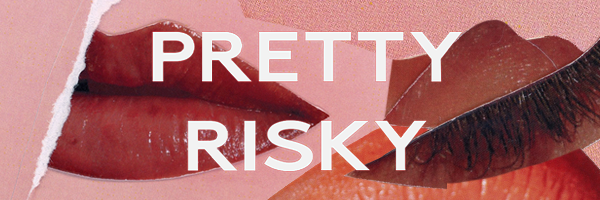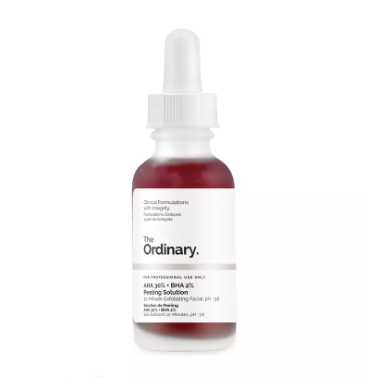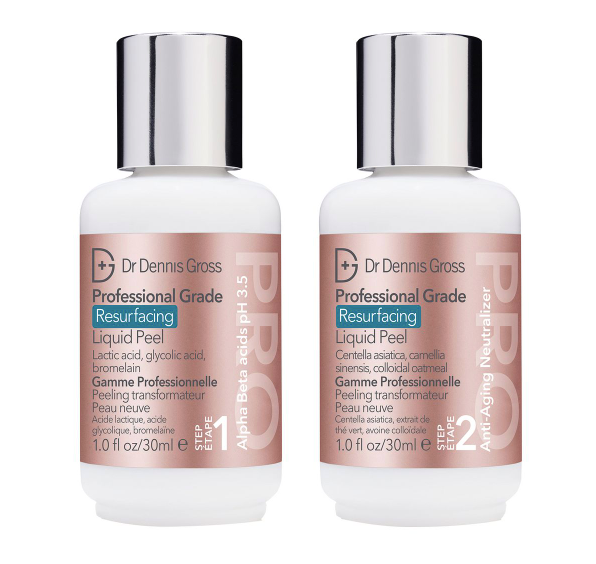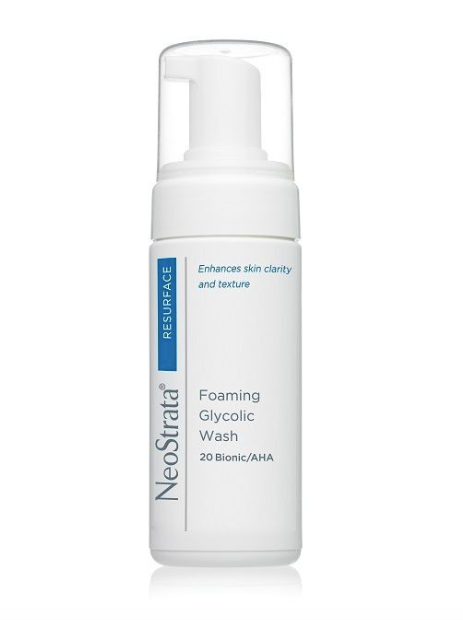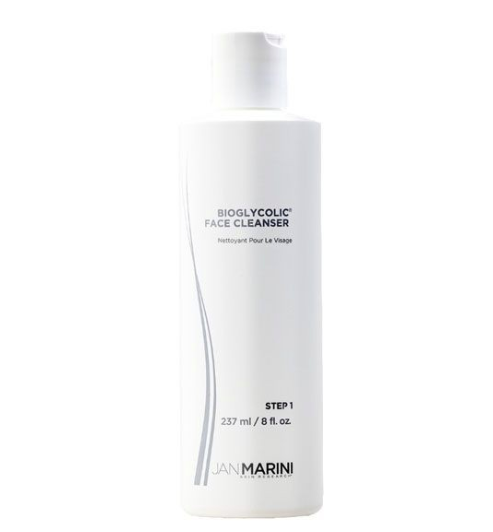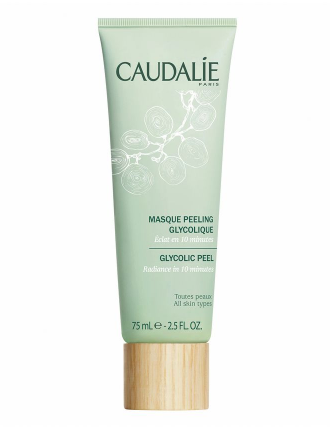Glycolic acid, lactic acid, salicylic acid... Skin experts worldwide extol the virtues of using acid exfoliators for treating common skin bugbears such as acne, hyperpigmentation and blackheads – and for good reason. They're simple to use, tend to be more eco-friendly than physical scrubs (which can contain plastic microbeads) and most importantly, they really work.
Left on the skin, AHAs (alpha hydroxy acids, like glycolic and lactic acid) exfoliate the surface layer, while BHAs (beta hydroxy acids, such as salicylic acid) exfoliate deeper inside the pore. As a result of their increasing popularity, beauty brands are formulating cleansers, leave-on toners, moisturisers, face masks, serums and more with the liquid skin perfectors. It's now easier than ever to incorporate acids into your AM-PM routine, regardless of your skin type (whether oily or sensitive) or how much time you set aside for skincare.
AdvertisementADVERTISEMENT
If you're a skincare obsessive, you'll already know that acids have varying levels of efficacy. Glycolic and lactic acid, for example, rarely exceed the 10% mark in most over-the-counter skincare, while dermatologists argue that salicylic acid is most effective at either 2% or 3%. Other factors which dictate strength are the type of acid, its pH and its concentration, says Dr Anjali Mahto, consultant dermatologist and author of The Skincare Bible: Your No-Nonsense Guide To Great Skin.
For more 'severe' skin issues, such as acne scarring or pigmentation, potent clinical grade acids can be used, and are often referred to as 'chemical peels'. When used by professionals with extensive skin training and in a controlled, sterile environment, they are safe. However experts have discovered that high-strength acids are landing in the laps of individuals with no expertise whatsoever, and the results are incredibly dangerous.
“
There is a risk of infection, scarring, burning and worsening of pigmentation.
”
A quick search online throws up a handful of websites selling acids, particularly glycolic and lactic acid blends, at varying strengths for the purpose of at-home use. Some range from 10% to 25% in strength, while others rather dangerously reach the 30% mark. Most websites advise that acid peels at these percentages are 'very strong' and warn against using them if you are taking acne drug Roaccutane or if you are pregnant, but none lists the side effects, which can include painful chemical burns, scarring and increased pigmentation.
Dr Mahto is one expert advocating for the regulation of such products being readily available to consumers with little to no experience. "A number of patients have attended my clinics over the past few months with skin issues such as pigmentation," she told R29, "and on further questioning during the consultation, it transpired that they were buying high-strength peels online from the US." Individuals are using home-bought peels for a variety of different reasons. "Skin complaints range from trying to treat their acne to improving their skin tone or texture, or hoping to remove skin pigmentation," Dr Mahto continued.
AdvertisementADVERTISEMENT
Little do consumers know that they can cause more harm than good when using these professional grade acid peels. "High-strength acid peels should only be carried out in a medical setting by an appropriately trained professional such as a qualified aesthetician, nurse or doctor," advises Dr Mahto. She adds: "There is otherwise a risk of infection, scarring, burning or pigmentation to name a few effects. Appropriate aftercare may also not be carried out at home. The pigmentation issue is of particular concern in those with olive toned skin or darker skin types." Increased pigmentation as a result of using high-strength chemical peels incorrectly can take months or even years to reverse.
The trend for purchasing clinical grade acids online can perhaps be put down to the expense of visiting a dermatologist or qualified aesthetician for skin treatment. With dermatology appointments often exceeding £250 in London in particular, it's hard to blame individuals for opting for cheap DIY peels, and with more people taking interest in their skin, according to Dr Mahto, many will turn to at-home methods without being aware of the associated risks.
This is something Jasmine*, 27, knows all too well. "I bought a chemical peel online because I'd had a few facials in the past and thought it was something I could do myself at home. I wanted to target some red marks left behind by some hormonal spots, as they just wouldn't fade. The product was clear and runny and looked like water, really. I used a brush to paint it on to my face and it started to sting almost immediately. My face was literally burning. The pain was unbearable and I remember just panicking. I rinsed it off quickly but my face was red and blotchy for hours afterwards. The area around my eyes was super sensitive for days and I couldn't apply any skincare there; it would hurt like hell. I'll stick to over-the-counter products in future. I think they're more trustworthy. I like Dr Dennis Gross Professional Grade Resurfacing Liquid Peel, and The Ordinary AHA 30% + BHA 2% Peeling Solution."
AdvertisementADVERTISEMENT
To prove just how easy it is to buy professional acids online without any skincare qualifications, R29 scoured the internet and came up with tens of hits. On Amazon, a 30% glycolic acid peel is available for £41.23 and can be added to basket without any checks. It is clear that regulations must be put in place but buying professional acids is also at the discretion of consumers, says Dr Mahto. "While there is no doubt that better legislation is required for the sale of these types of products, it is also important that the individual takes responsibility for their own health. Professional treatments simply should not be carried out at home."
You don't have to ditch acids altogether, though. Of course, it is best to avoid professional grade acid treatments, but over-the-counter treatments are a good option. They aren't the issue here, says Dr Mahto. "Most over-the-counter skincare products are safety tested and should be safe. For anyone looking to incorporate over-the-counter acids into their skincare routine, start off cautiously, especially if there is a history of sensitive skin. Maybe start using the products a few times a week and slowly build up to see the chemical exfoliation benefits." Some of Dr Mahto's favourites include NeoStrata's Foaming Glycolic Wash, £26.99, Caudalie's Glycolic Peel, £22, and Jan Marini's Bioglycolic Face Cleanser, £28.50.
AdvertisementADVERTISEMENT
A common misconception is that the higher the acid, the more beneficial it will be, but the percentage is only a small part of the formulation, says Dr Mahto. "Other factors which dictate strength are the type of acid (whether AHA or BHA) and its pH level, as well as its concentration." Dr Mahto reiterates: "When using AHAs or BHAs, most over-the-counter products have been safety tested, but starting with caution is sensible."
If you're experiencing any sensitivity, such as peeling, flaking, increased redness, stinging or burning, stop using the product immediately. If the symptoms worsen, consult a qualified skin expert as soon as possible. And if you are using any kind of acid, regardless of its strength, it pays to wear sunscreen during the day (in all seasons), as acids can make skin sensitive to sunlight and cause further skin issues, like pigmentation.
*Name has been changed
AdvertisementADVERTISEMENT







